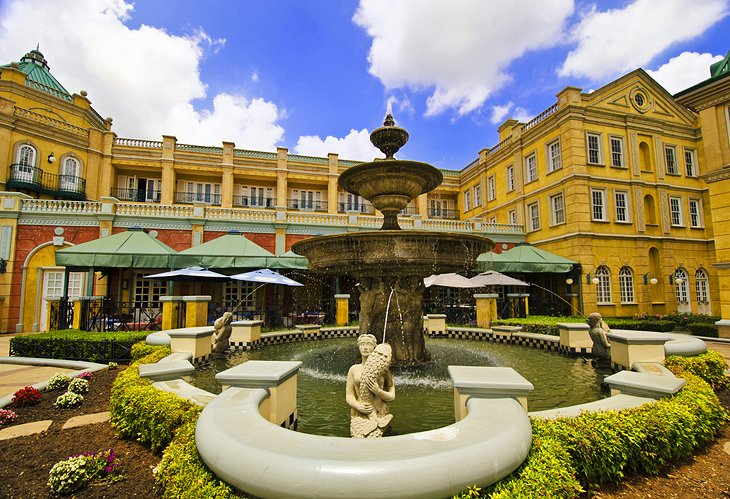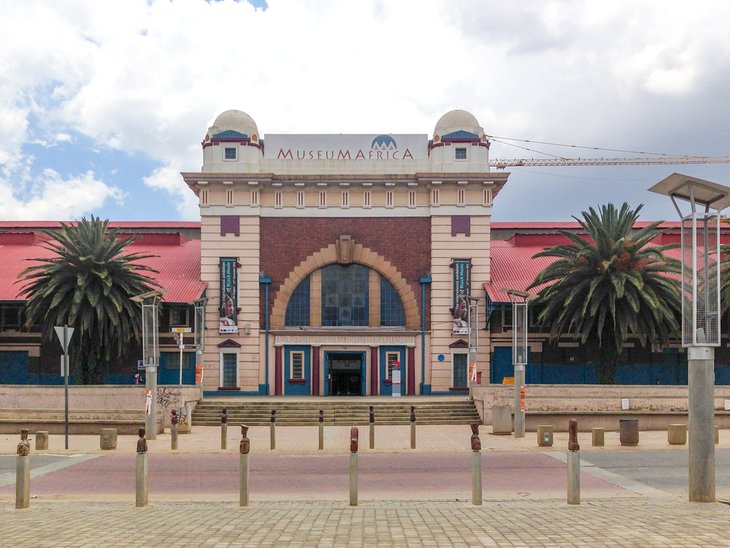See This Report on Johannesburg North Attractions
Table of ContentsThe Greatest Guide To Johannesburg North AttractionsNot known Details About Johannesburg North Attractions Rumored Buzz on Johannesburg North AttractionsThe Ultimate Guide To Johannesburg North AttractionsAn Unbiased View of Johannesburg North AttractionsGetting My Johannesburg North Attractions To Work
The city expanded on the side of the Witwatersrand Key Coral reef, a below ground stratum of gold-bearing quartz-silica conglomerate that arcs for hundreds of miles below the Highveld - Johannesburg North attractions. Most of the gold mines in the city stopped procedure in the 1970s, yet in its day the Witwatersrand gold sector accounted for even more than 40 percent of the world's yearly gold manufacturing.Johannesburg has a temperate environment. The city appreciates concerning 8 hours of sunlight per day in both winter season and summer.
What rainfall the city gets falls virtually solely in the summer months, usually in amazing late-afternoon electrical tornados., where numerous homeowners still depend on coal for gas.

The smart Trick of Johannesburg North Attractions That Nobody is Discussing
The balance of the city is inhabited by whites. Lodging varies in personality and quality.
Physical growth, although somewhat restricted by transportation, proceeded rapidly as migration to South Africa, and Johannesburg in specific, increased substantially.
Many bad suburban areas were blended, with poor blacks and whites living together, although the affluent suburban areas were generally reserved for whites.
The previous system of eleven numbered regions was reorganised in 2006. Marshalltown, as seen from the top of the Carlton Centre. The M1 and M2 run behind the buildings, and the southerly suburbs prolong past the highway border. The inner city of Johannesburg is located within the city's Area F. The approximated populace of the region is 200,000, [] however the number of people staying in the central city on an informal basis is unidentified, as lots of are illegal aliens. A lot of higher-income citizens and white people have relocated to the north suburban areas and have been replaced by lower-income black individuals. The joblessness, education, and age profiles of the location are all unidentified, because of the difficulty of obtaining reputable information concerning the location.
The Ultimate Guide To Johannesburg North Attractions
Centred on the CBD, the area consists of the residential areas of Yeoville, check over here Bellevue, Troyeville, Jeppestown, and Berea to the eastern. To the west it spreads to Pageview (Johannesburg North attractions) and Fordsburg. There are tiny industrial parks to the south, such as City West-Denver and Benrose. Around 800,000 commuters go through the inner city on a daily basis, and it works as a local buying node for site visitors from the southern suburban areas. Yeoville and Bellevue have a mix of apartment or condo buildings and single residential devices on small lots. The region is located on a mountainous divide that runs from east get more to west.

Johannesburg North Attractions Fundamentals Explained
The eastern suburban areas are some of the oldest locations of Johannesburg, there are big areas of Jewish and various other European histories, the majority of the population is English talking. There are 3 golf programs as well as a number of secured ridges with viewsites.
The location is primarily made up of old "matchbox" residences, or four-room houses developed by the federal government, that were constructed to provide inexpensive accommodation for black employees throughout racism. Soweto is an abbreviation, representing "South Western Townships". Street after street in this area is lined with matchboxes; however, there are a few smaller areas where flourishing Sowetans have built houses that are much more comparable in stature with those in more upscale suburbs.
Hostels are an additional famous physical feature of Soweto. Initially developed to house male migrant workers, many have been improved as dwellings for couples and family members. The Learn More N1 Western Bypass skirts the eastern limit of Soweto. The suburb was not traditionally permitted to develop work centres within the area, so mostly all of its homeowners are commuters to various other components of the city.
A Biased View of Johannesburg North Attractions
The residential areas in the northern residential areas are mainly official, with no substantial locations of informal housing, or real estate that does not have a permanent framework. This is a recognized area, there is a trend of land usage change from domestic to commercial, particularly along main arterial roadways and around established nodes.
The location is well attached to roadway networks, specifically along the north-south axis formed by the M1 and N1. Roads to the east and west are less well established, as there are no freeways taking a trip in that instructions. In the direction of the northern border of the city, the thickness of growth decreases, leaving large locations of undeveloped land around Midrand.
The Definitive Guide for Johannesburg North Attractions
The very first suburb to the north of the inner city is Parktown, which lies on a hill forgeting the inner city and Hillbrow. It has many affluent residents and Edwardian-design manors, along with the Education and Clinical universities of the College of the Witwatersrand. The large concrete Charlotte Maxeke Johannesburg Academic Health Center controls the horizon of Parktown.